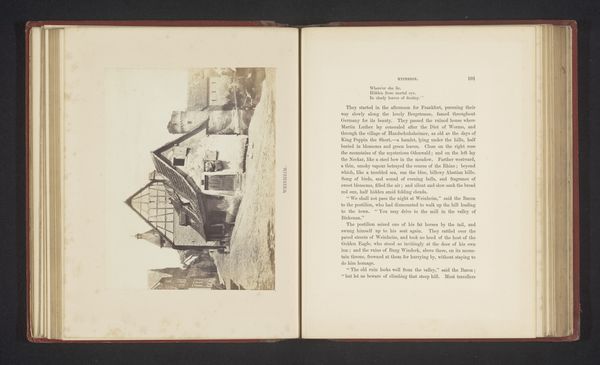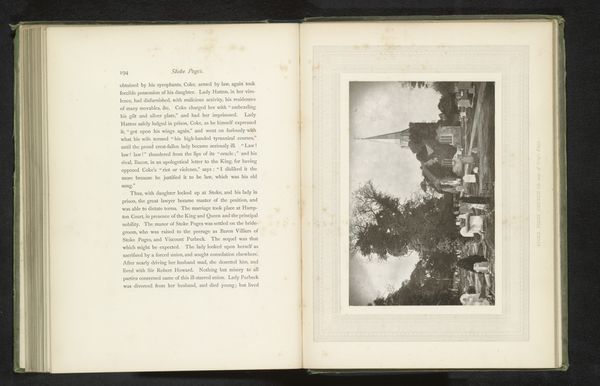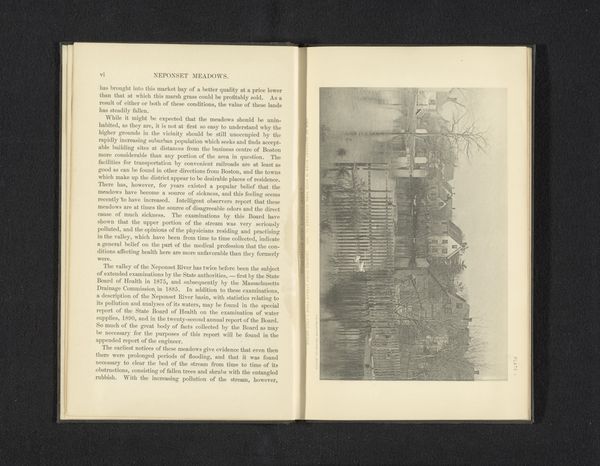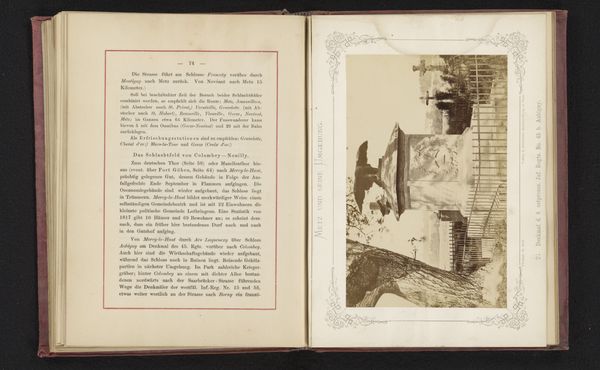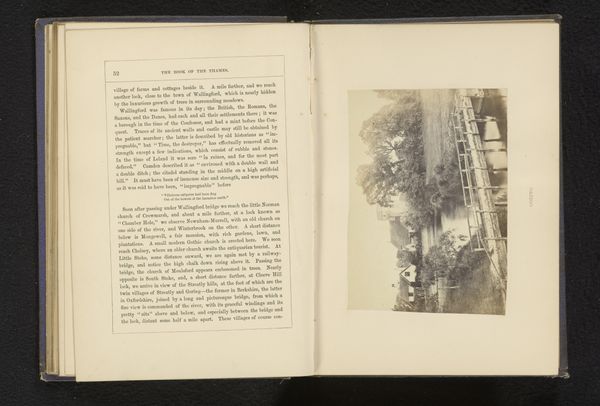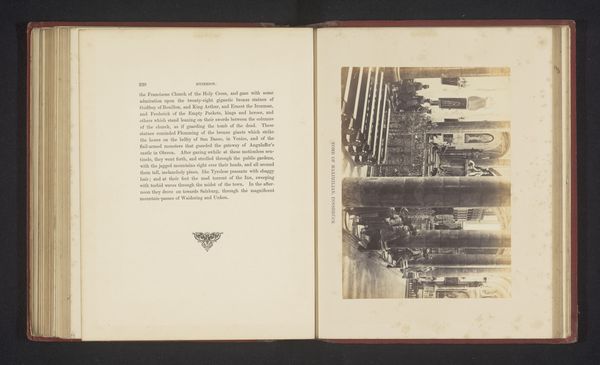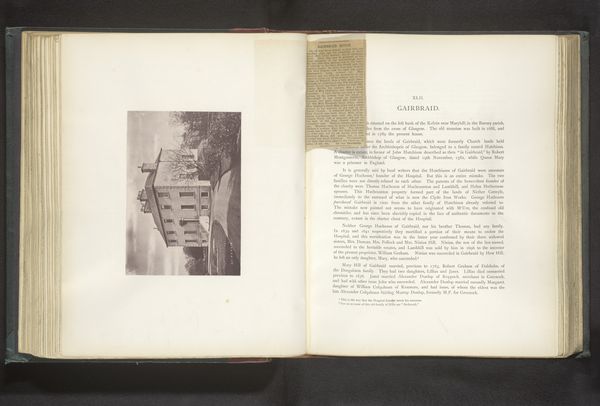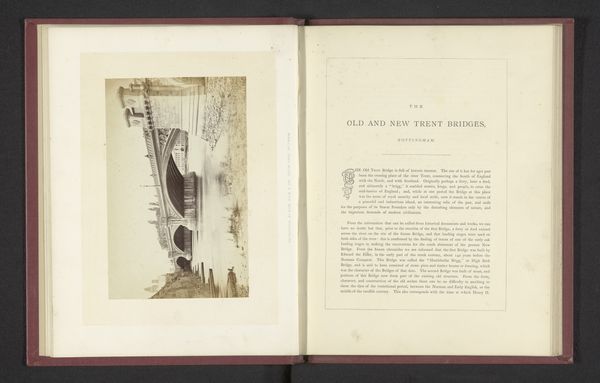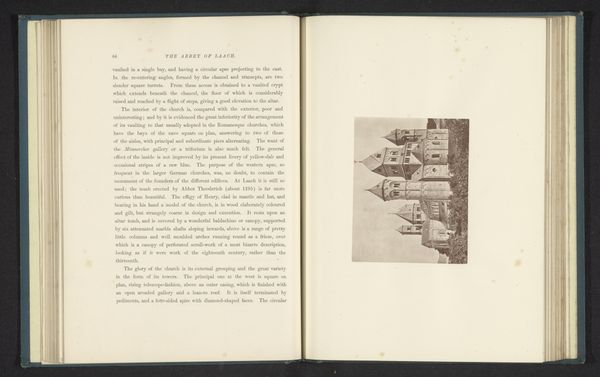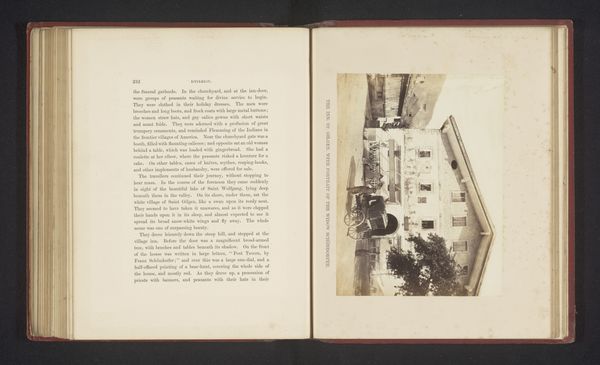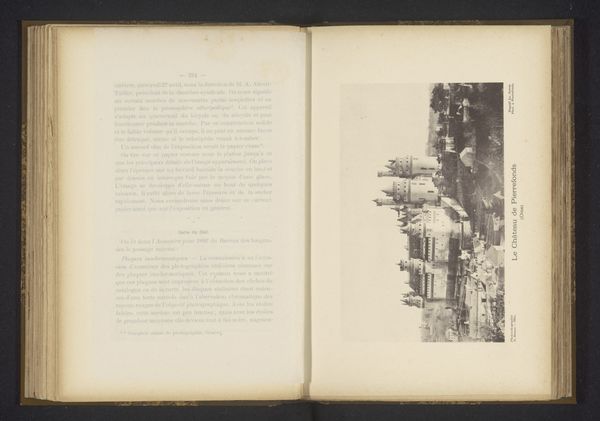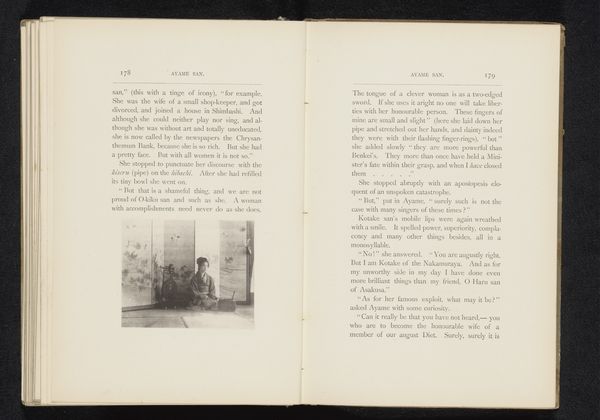
print, photography, albumen-print
# print
#
landscape
#
photography
#
albumen-print
Dimensions: height 121 mm, width 172 mm
Copyright: Rijks Museum: Open Domain
Curator: This is "Klooster in Interlaken," an albumen print by Francis Frith, dating to before 1865. The print, currently housed at the Rijksmuseum, presents a serene, if slightly eerie, view of a monastery. Editor: My initial impression is one of quiet solemnity. The tones are muted, almost monochromatic, lending the scene an air of timelessness. I wonder, though, about this placement inside of an album - how might this affect our viewing? Curator: The albumen print offers a remarkable level of detail. Note the careful rendering of light and shadow, particularly how it models the architectural forms. Frith uses perspective to lead the eye through the composition. Editor: Yes, it's skillfully composed, but knowing that this image was produced before 1865 invites questions about access and power. Who had the means to commission or collect such prints, and what narrative does it promote about European culture and religion during that time? Were these idyllic visions meant to legitimize colonial ambitions through constructed landscapes? Curator: Such issues around image production, as always, must be taken into consideration. Frith certainly seeks a picturesque arrangement; he seems preoccupied with shape and tone rather than some form of social realism. I wonder, could the artist have presented his image as "objective" during this era? Editor: Precisely - it's important to remember that there is no truly objective eye, and that the power to create an image also allows for a shaping of perceptions. Also, what stories about labour and the colonized remain obscured in an image like this? What do these "silent" spaces reveal? Curator: Regardless of that silence, I remain captured by the structure. Frith emphasizes geometry and the balance between man-made structure and nature. Editor: While you contemplate form, let's also consider function. Photographs of this nature served as documents but also cultural exports that represented colonial imaginaries abroad and fostered identity and difference back home. Curator: Food for thought, indeed. Looking closely has been especially rewarding in the way the image is constructed - one can't help but ponder Frith's skillful ability to manipulate visual aesthetics through albumen printing. Editor: True. Even in quiet portrayals, art like Frith's "Klooster in Interlaken" demands critical and diverse perspectives to navigate its historical dimensions.
Comments
No comments
Be the first to comment and join the conversation on the ultimate creative platform.
